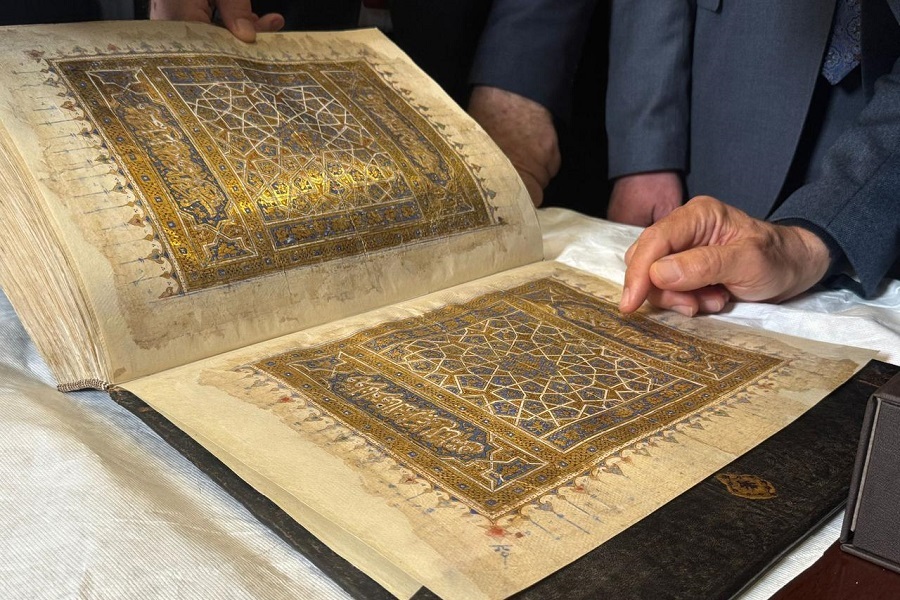Centuries-Old Quran Manuscript from Montenegro Restored, Digitized

The manuscript, held for centuries at the Hussein Pasha Mosque in Pljevlja, Montenegro, had sustained damage over time and required expert intervention to preserve it.
The restoration was carried out at the Suleymaniye Centre in Istanbul by Türkiye’s Manuscript Institution (TUYEK), after Montenegro’s Islamic Union sent the Quran for assessment and preservation.
Specialists also produced a high-resolution digital version, with a facsimile edition currently under consideration.
Read More:
Experts initially assumed the manuscript to be of a more recent origin. However, detailed analysis of its materials, stitching, and calligraphic style led to its reclassification as a Mamluk-era artifact, likely dating to the 14th century.
TUYEK president Coskun Yilmaz explained that the manuscript had undergone earlier repairs, but these were poorly executed and risked further deterioration.
Behlul Kanaqi, vice president of the Islamic Union of Montenegro, described the manuscript as a cultural treasure and a symbol of endurance through periods of war and hardship. Speaking to Anadolu Agency, he said the community had preserved the Quran in its original condition until now, but expert restoration was essential to ensure its longevity.
Read More:
According to Hafiz Osman Sahin, head of the Quran Review and Recitation Committee at Türkiye’s Presidency of Religious Affairs, the manuscript reflects the refined artistry of its time. He praised its intricate calligraphy and ornamentation, noting its value as both a religious and historical document.
Source: Agencies



